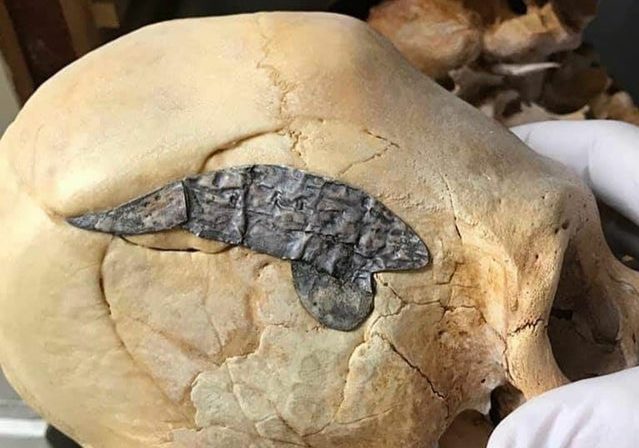Advanced brain surgery seems to have been preformed as long ago as 2,000 years.
This ancient elongated skull from Peru that seems to be held together with a metal could offer evidence of of this type of these highly skilled techniques
The Museum of Osteology, in Oklahoma, says a 2,000-year-old skull in its collection. They believe it may have been that of a man who was injured in battle and had surgery to implant a piece of metal to repair the apparent brain fracture.
The following written content from Hannah Smith

Experts at the museum believe the man survived, making the skull a crucial piece of evidence proving that ancient peoples were capable of performing complex surgeries.
This is a Peruvian elongated skull with metal surgically implanted after returning from battle, estimated to be from about 2,000 years ago. One of our more interesting and oldest pieces in the collection,’ a spokesperson for SKELETONS: Museum of Osteology told the Daily Star.
‘We don’t have a ton of background on this piece, but we do know he survived the procedure. Based on the broken bone surrounding the repair, you can see that it’s tightly fused together. It was a successful surgery.’
The skull was initially in the museum’s private collection, but was placed on public display in Oklahoma in 2020 as a result of public interest generated by articles about the discovery.
Peruvian surgeons are believed to have invented a number of advanced procedures to treat fractured skulls, which were common injuries suffered in battle due to the use of slingshots and other blunt-force weapons during the period.
These surgeries including trepanation – a procedure that involved scraping fragments of skull from a patient without the use of anaesthesia.
Speaking to National Geographic in 2016, physical anthropologist John Verano of Tulane University explained, ‘They learned early on that this was a treatment that could save lives. We have overwhelming evidence that trepanation was not done to increase consciousness or as a purely ritual activity but is linked to patients with severe head injury, [especially] skull fracture.’
The skull displayed by the Museum of Osteology is an example of a Peruvian elongated skull – an ancient example of body modification that saw tribe members intentionally deform the skulls of young children by binding them. Read more from Unilad





